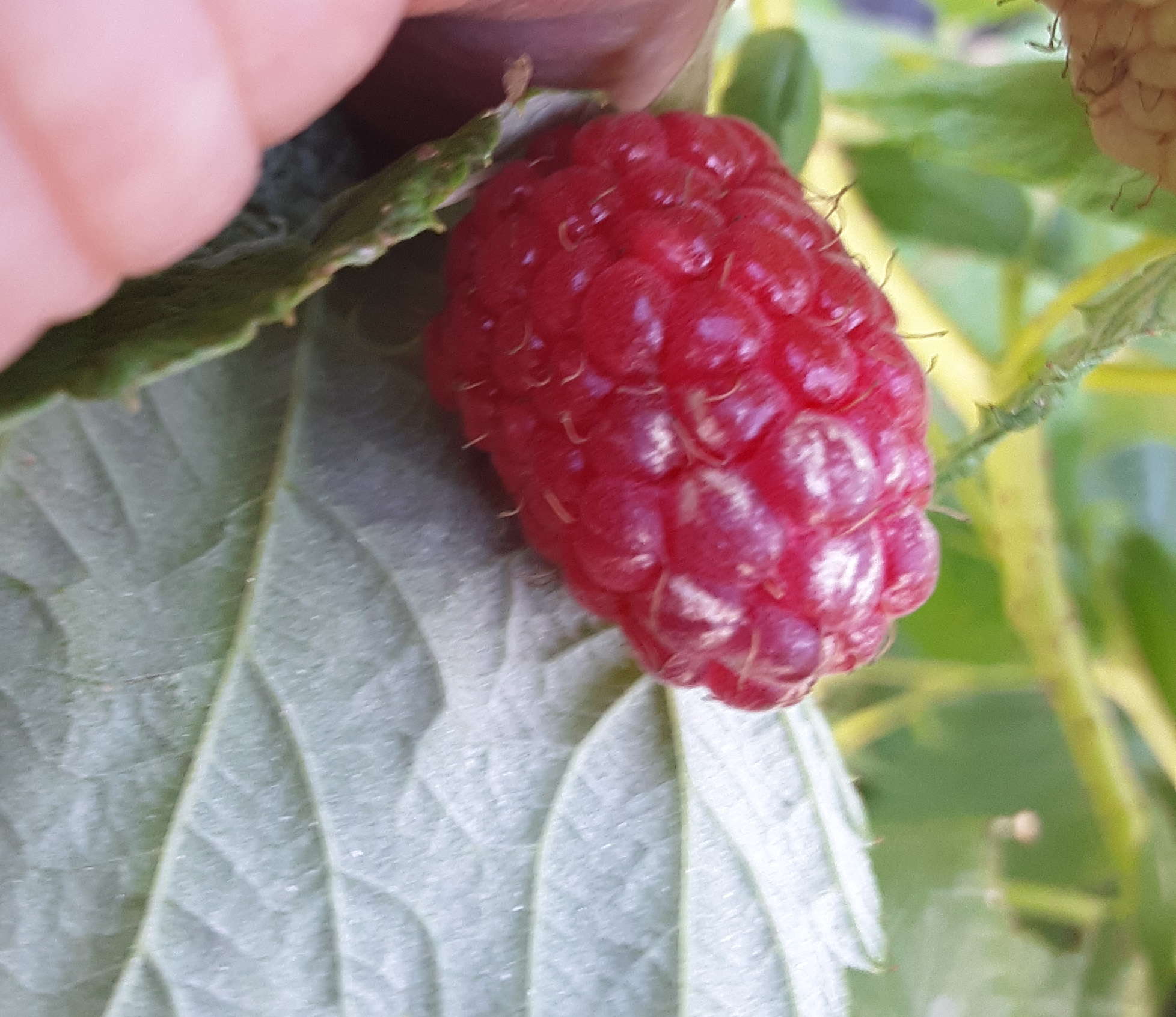West central Michigan small fruit update – Aug. 25, 2020
Blueberries are quickly coming to an end and raspberries are in harvest. Fruit quality is excellent but in some late season blueberry varieties, fruit size has been impacted by the long drought.

West Michigan has been under long drought conditions at a time when water is needed the most for fruit growth and development, especially in blueberries. So far, high daily temperatures and dry conditions have been the norm for most of the summer. For example, rain accumulated in west central Michigan since July 11 as of now is only 2 inches, approximately. This has created a water deficit that many growers, especially strawberry and blueberry growers, were not able to satisfactorily compensate. Even with good irrigation, blueberries were losing more water via evapotranspiration than the water the root system was able to pull out of the ground.
In addition, bright sunny days with temperatures above the 80s also created problems for some blueberries and raspberries varieties that suffered sunscald (Photos 1 and 2).
Currently, daily temperatures in the area are not much different from the pervious weeks. Average daily minimum are 58 degrees Fahrenheit and the daily maximum averaged 83 F with no rain accumulation over the past seven days.

Regarding small fruit crops, raspberries are in harvest in west central Michigan. Fruit is excellent and so far the only significant problem has been spotted wing Drosophila (SWD). However, some growers are learning to deal with this pest by applying insecticides, daily harvesting and improving crop conditions to allow better insecticide penetration and less humidity inside the foliage.
Blueberries are in the final phase of harvesting. Currently, Elliott and Aurora varieties are being harvested. In southern counties, harvest may be finished in two weeks. Blueberry harvest for fresh was impacted by the COVID-19 pandemic, which affected labor availability. Therefore, after the first hand pick, some growers machine-harvested the rest of the crop.
Because of the warm weather conditions prevailing since the beginning of the season, blueberry plant phenology advanced rapidly, and early varieties were able to escape most of the largest part of the SWD early population. This, combined with good management of the early portion of the SWD early arrival, allowed most grower to reduce the pest pressure with limited use of insecticide. Less insecticide applications means less money spent in pest control. These pest control savings are very important at the time when blueberry prices are not at its optimum.



 Print
Print Email
Email
